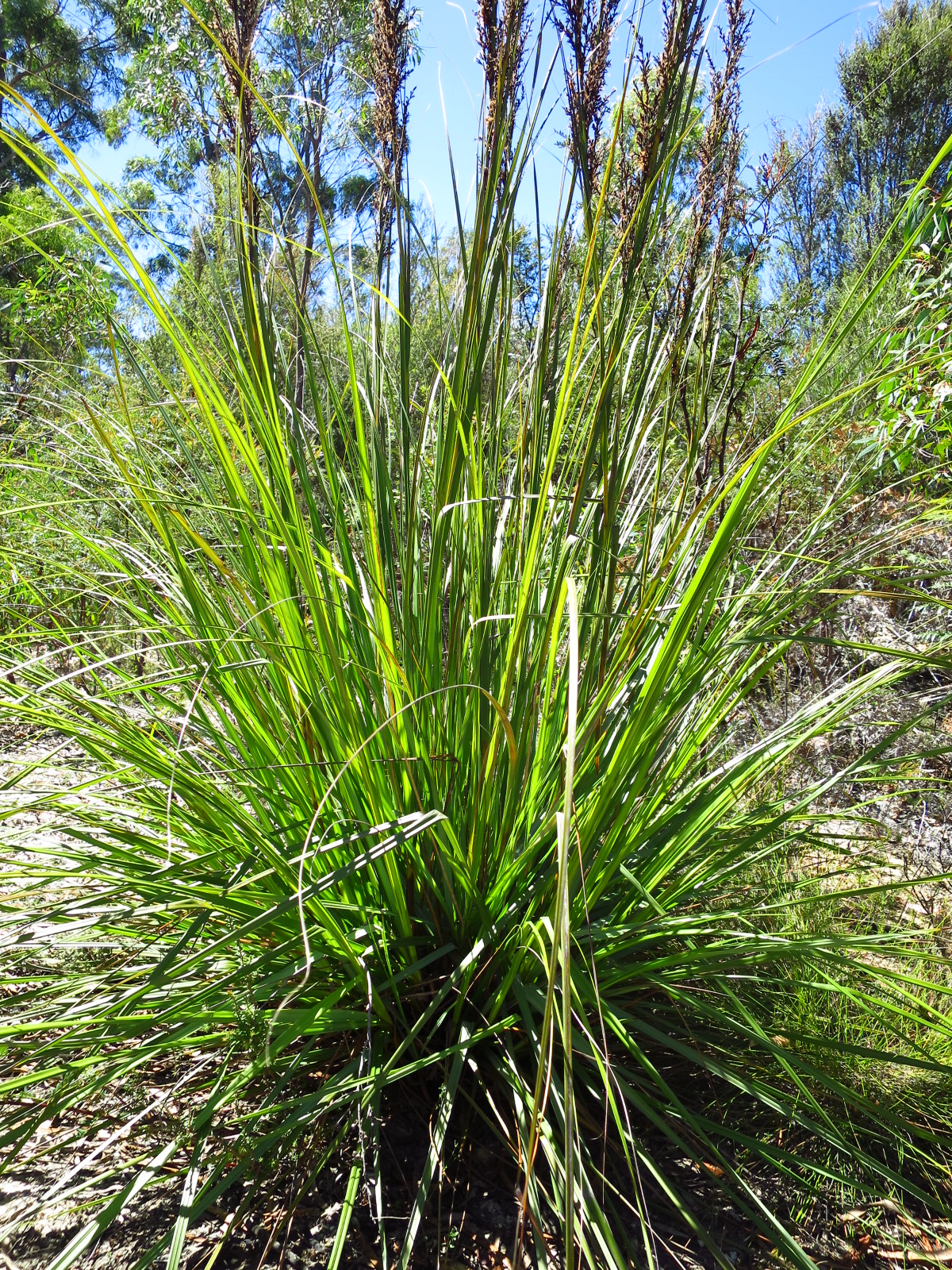Scientific Name: Gahnia grandis
Common Name: cutting grass
Family Classification (Clade): Monocots
Family: Cyperaceae
Form Description: Very large tussocky sedge.
Flowers: Heads bright brown when young, blackish in fruit.
Fruit: Nut – bright red, hanging from the heads by long black filaments.
Municipality
Plant Communities
Habitat Notes
Common in wet or poorly drained situations, sea level to mountains. Margins of forest and marsh, road cuttings and ditches, buttongrass heaths. All regions except Midlands and north-east.
Site Tolerance
Exposed, Moist, Waterlogged, Windy
Soil Tolerance
Poorly-drained, Well-drained
Frost Tolerance
Hardy
General Notes
Bee attracting. Bird attracting. Relies on birds, including the currawong, to germinate its seed. Provides good frog habitat and bandicoot habitat. High flammability. Resistant to Phytophthora cinnamomi. Used in traditional Palawa basket weaving.
Propagation Calendar
-
Flowering Month
Jan Feb Mar Apr May Jun Jul Aug Sep Oct Nov Dec -
Seed Collecting Month
Jan Feb Mar Apr May Jun Jul Aug Sep Oct Nov Dec -
Sowing Month
Jan Feb Mar Apr May Jun Jul Aug Sep Oct Nov Dec -
Cutting Month
Jan Feb Mar Apr May Jun Jul Aug Sep Oct Nov Dec
Propagation Method
Seed Information
Seed Collection
Cut seed heads at base with secateurs. Place on groundsheet and allow to dry thoroughly to extract seed. Thrashing may also be necessary.
Seed Treatment Method
Standard Scatter seed thinly on to damp potting mix. Hold seed in place by covering with more potting mix to approximately the depth of the seed size.
Seed Treatment Notes
Seed has a dormancy and will not germinate for 12 months after seed maturity. Dry storage is recommended.
Cutting & Division Information
Division and transplanting have limited success with most Gahnia species.
